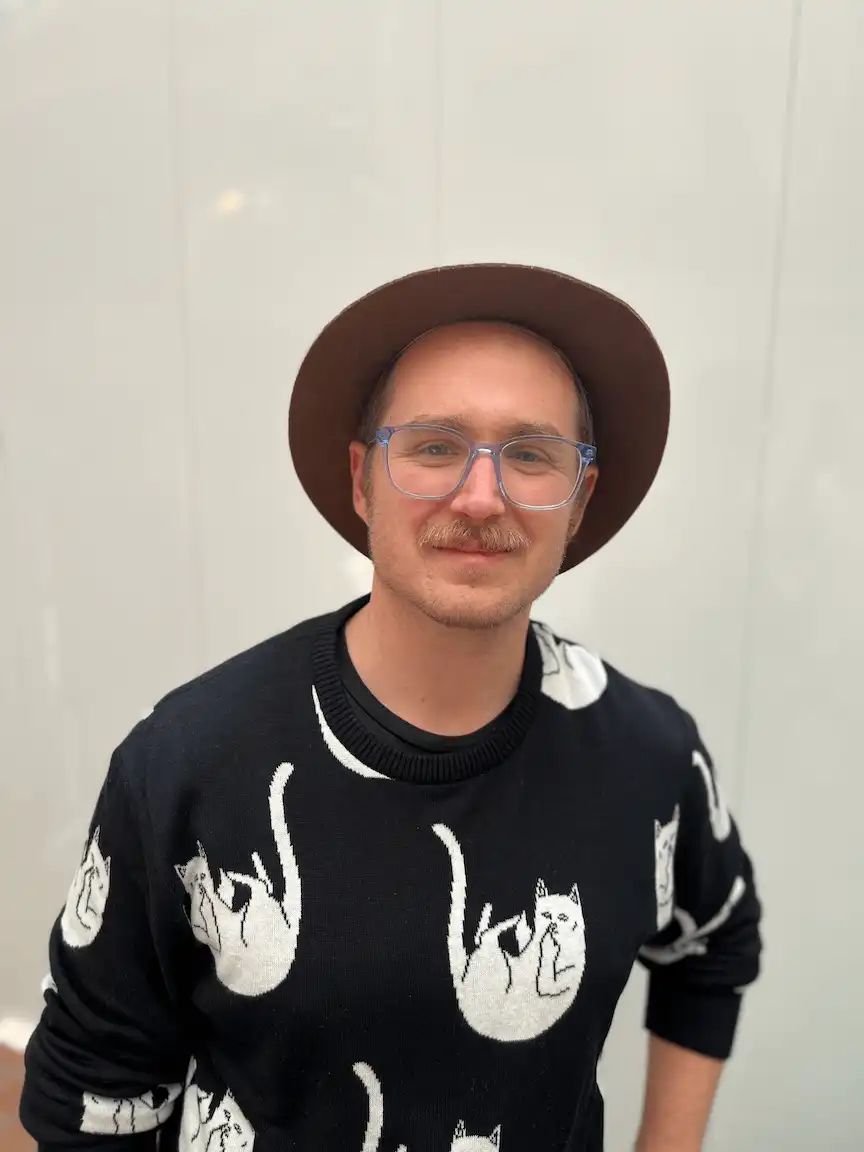
As faculty director, I led a team of graduate students in close collaboration with DWNTWN Muncie.
Together, we developed the Mobile Museum of Muncie (MMM)—a location-based web AR experience built in 8th Wall that reconstructs lost downtown Muncie buildings through 3-minute, interactive narratives. The student team handled user-journey mapping, content research, prototyping, and usability testing under my direction, while I managed the development, partnership, storyboard approval, and final deliverables. Users stand in the very parking lots where these historic sites once stood and launch immersive video, audio, 3D models, and interactive elements from their phones using the 8th Wall platform.
Project Manager and Developer
Over 1K views as of December 2024
8th Wall, Aframe.js, HTML, CSS, Niantic VPS
DWNTWN Muncie and Ball State University
1
Yes, in Muncie
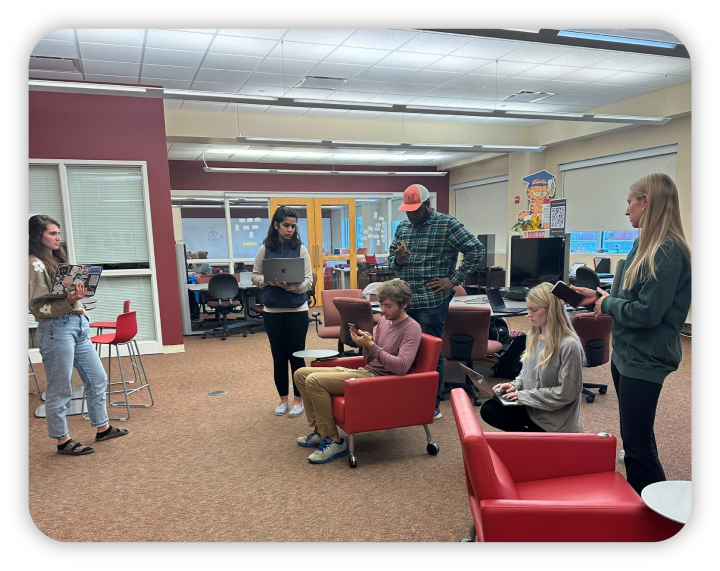
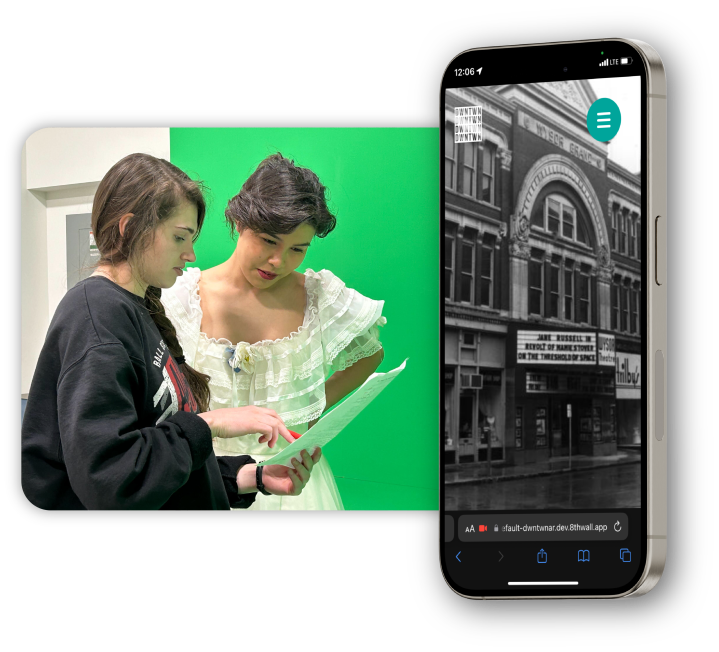
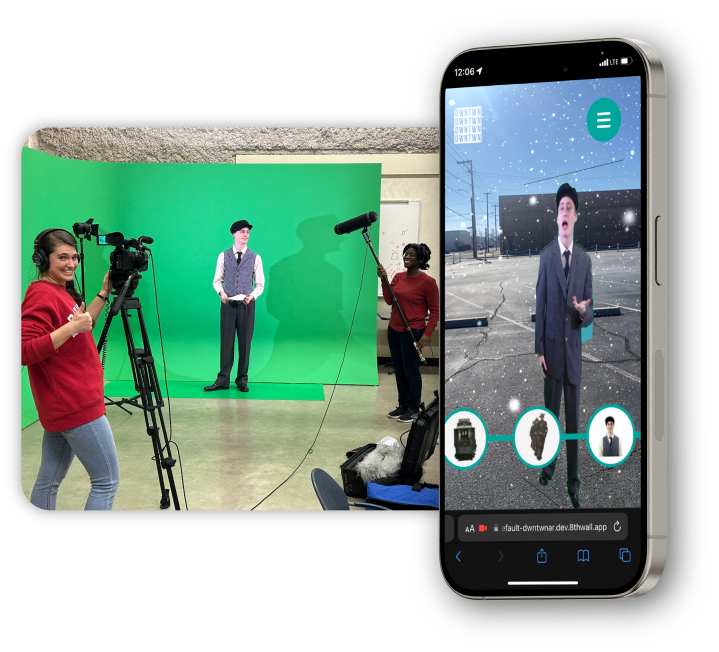
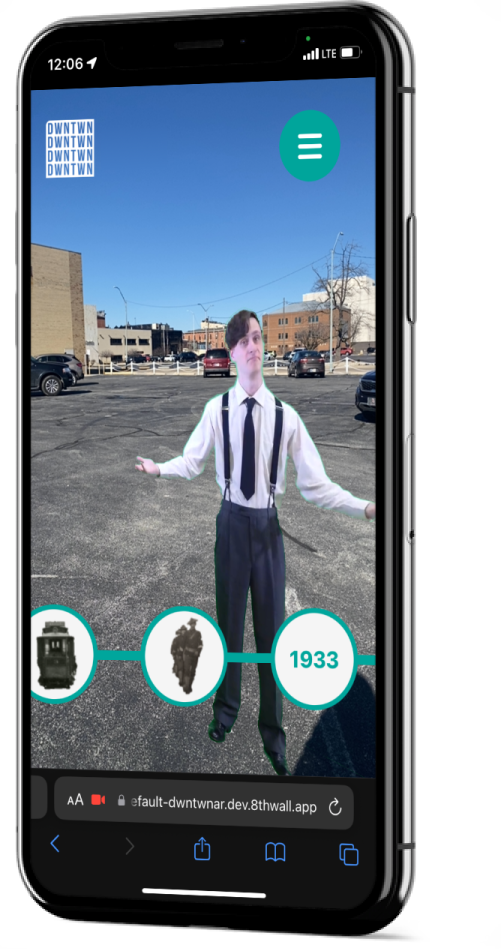
Identified sites via local historians, archives, and community groups (e.g., Ghost Parking Lot Tours; Ball State’s Digital Media Repository).
Gathered primary sources—photographs, newspaper clippings, sound effects—and sketched a three-part, three-minute screenplay.
Highlighted one 3D model per story and planned interactivity/movement.
Developed character personas in Canva.
Cast actors (via BSU Theatre or Muncie Civic), scheduled table reads, and reserved green-screen studio time and equipment.
Formatted scripts in Celtx or Google Docs and organized peer reviews with content experts.
Developed interactive Storyboards in Figma
Filmed each narrative on green screen in ~1 hour sessions, using clap markers to synchronize audio.
Scanned physical artifacts and scenes with Luma AI or Scaniverse to produce glTF 3D models.
Broke the narratives into discrete “takes” aligned to storyboards in Figma.
Coded the AR experience in HTML/CSS/JavaScript using Aframe in 8th Wall. Student developers utilized templates I provided.
Conducted internal “think-aloud” sessions and external user tests to validate UI flows and performance.
Iterated on content, interactions, and load-time optimizations prior to launch on June 6, 2024.
Users launch each story at the precise lot where the building once stood.
2D actors (e.g., “George Rolland,” “Virginia Williams”) appear against chroma-keyed backgrounds to tell each tale.
Digitally reconstructed building models pop into the camera view at real-world scales.
Spatialized effects accompany narration to heighten presence.
Users launch each story at the precise lot where the building once stood.
Stories prompt users to walk toward markers or tap hotspots as part of the narrative flow.
Delivered entirely in the browser—no app install required—via the 8th Wall engine.
Each narrative is paced to roughly one minute per act—research, production, and interactivity—and emphasizes underrepresented voices through diverse characters.
Chronicles the 1890s trolley strike through the eyes of “George Rolland,” a fictional union worker; combines historical photos, drama, and labor history.
Recasts the 1887 Emancipation Day celebration at an inclusive rink via “Virginia Williams,” spotlighting performances, community, and Frederick Douglass’s speech.
Revisits 1852–1961 theater culture in Muncie, tracing the evolution of plays, films, and operas that shaped local entertainment.
Immerses users in a 1900s medical training school where students learned nursing and doctoring; scripting and filming are underway.